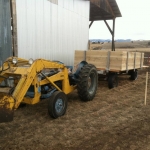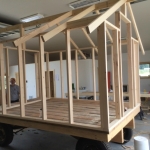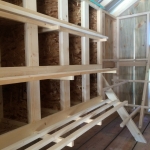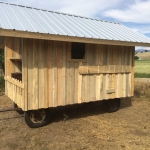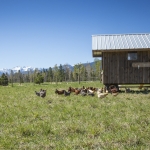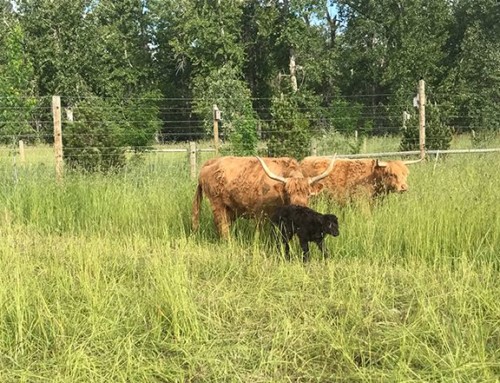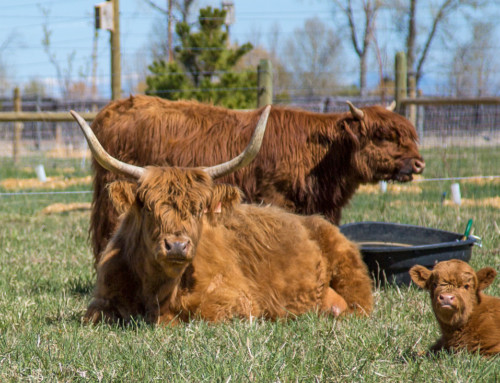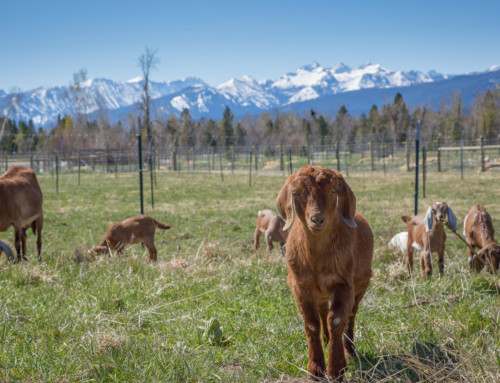Chickens are an active partner of ABC acres in helping us realize our long term goals. Meat, eggs, fertilization, pest & weed management, as well as happy, energetic companions, are many of the roles this feathered friends play. Afforded clean, healthy pasture, the chickens make the most of their daily outdoor time. From sun-up to sunset, the chickens are spending their day fertilizing the fields by spreading larger animal’s manure while spreading their share of Nitrogen along the way, breaking pest incubation cycles, preparing the ground for overseeding a cover-crop, and simply lounging the day away delivering colorful, tasty eggs. Buckeyes, Bard Rocks, Rhode Island Reds, Americana’s, Golden Laced Lakenvelders, Buff Orpingtons and Cuckoo Morans make up our current egg-laying flock.
Chick Brooder:
Presently we work with credible poultry rearing farms to obtain our ongoing meat & egg layer flock. Upon arrival, these 1-2 day-old chicks find their way into our brooder. Located in the barn, this 12 x 8 area affords 96 sqft for the chicks to spread out and get acclimated to their new surroundings. There is enough room to partition off areas for injured, sick or aggressive chicks to allow for a comfortable environment to settle in. We make a homemade additive (honey, garlic and apple-cider vinegar) to add to the chicks water for the first week to give them an immunity boost upon arrival, while offering them a free-choice diet of Big Sky Organics ‘chick starter’ for the first 4-6 weeks. At 4-5 weeks of age, the chicks are moved from the indoor brooder, and into our inside / outside chicken coop. This area (12 x 12), allows for the chicks to get comfortable with the outdoors in a protected space while having the indoor coop to reside in when desired. The bare ground allows them to develop their grazing skills, while still having access to free choice grain. At around 6 weeks, the young chickens are now ready to join the flock in the field. Depending whether they are meat birds or layers, will determine where they go from here.
Mobile coop:
Using the chassis of an old hay wagon, we constructed a coop to sit on top, thereby allowing us to move the girls where we needed their services. Whether it was cleaning out an old garden patch or following behind the hogs, goats and/or cattle, our layers were eager each new day to ‘get to work’… all the while depositing farm fresh eggs along the way. Our mobile coop is approx 7’ x 12’, inclusive of 30 nesting boxes and roosting bars. We have reached a healthy capacity at 70 hens. The coop has a storage rack on the back where store supplemental feed, grit, egg cartons, and nest box material for replenishing when we clean out the coop. It also houses two 6’ volt DC batteries which are tied to a 250w solar panel adhered to the roof. This power supply is enough to power three chicken nets for protection from ground predators, while also having the option to power a heating element for heated water should it be needed. Though it is large in size, we have found it easy to move throughout the pastures with our ATV.
Chicken Tractor ‘Salatin style’:
For our meat birds, we have followed in the steps of our modern day mentor, Joel Salatin. The ‘tractor’ is a framed rectangular box that holds meat birds which you can reposition on pasture daily so that they too are on fresh grass, while weeding and pest managing constantly. We have modified the original design to 6’W x10’L x2’H… it is sided with old metal roofing on three sides with the fourth in chicken wire. The top is 2/3rds sheeted in old metal roofing with the remaining chicken wire. It is this portion of roofing that is removable to feed, water and remove birds as needed. We have placed two small 2×4 skids under the back cross-member to allow for ease of moving without the need of a dolly (Salatin’s way). At approx 60sqft surface area, it is designed for a maximum of 40 birds at one time. Most of our meat bird flocks range in 25-30 head. The ‘tractor’ is moved each morning about 10’ forward, thereby onto fresh grass. At the same time, we offer clean water and distribute some supplemental feed. The tractor offers protection from predators, while being oriented properly to protect the birds from hot afternoon sun. Most of our birds enter the ‘tractor’ at 4-5 weeks of age, and are removed from butchering at 10-12 weeks.


